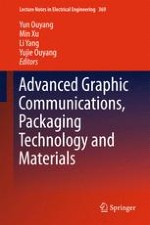2016 | OriginalPaper | Chapter
65. An Application Study of Electronic Shelf Label on Cultural Creative Merchandise
Authors : Mingchw Wei, Yungcheng Hsieh
Published in: Advanced Graphic Communications, Packaging Technology and Materials
Publisher: Springer Singapore
Activate our intelligent search to find suitable subject content or patents.
Select sections of text to find matching patents with Artificial Intelligence. powered by
Select sections of text to find additional relevant content using AI-assisted search. powered by
